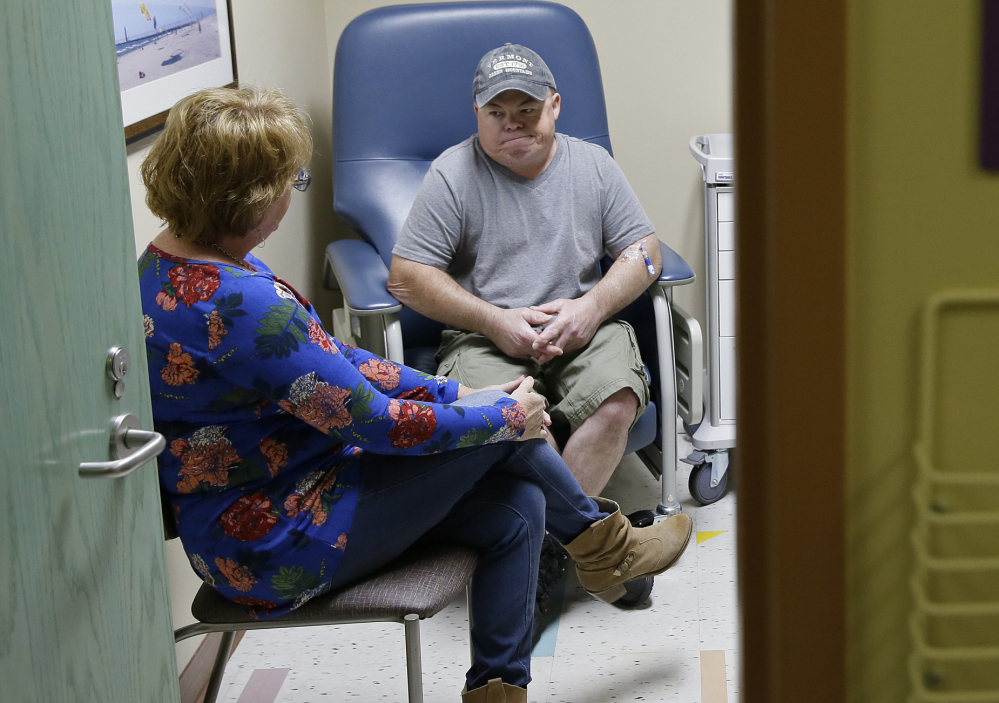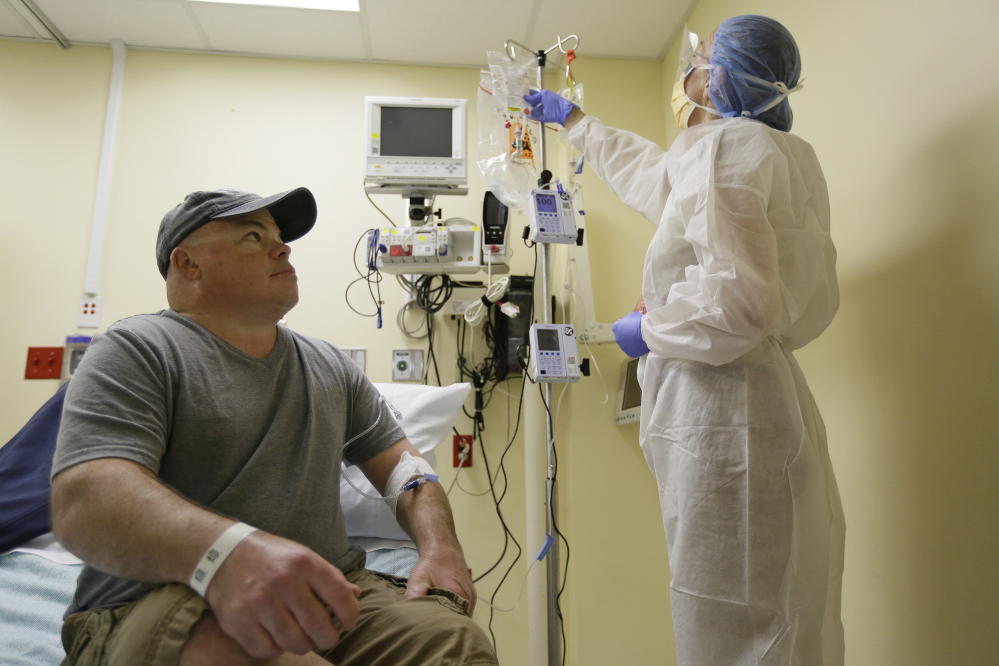OAKLAND, Calif. — Scientists for the first time have tried editing a gene inside the body in a bold attempt to permanently change a person’s DNA to cure a disease.
The experiment was done Monday in California on 44-year-old Brian Madeux. Through an IV, he received billions of copies of a corrective gene and a genetic tool to cut his DNA in a precise spot.
“It’s kind of humbling” to be the first to test this, said Madeux, who has a metabolic disease called Hunter syndrome. “I’m willing to take that risk. Hopefully it will help me and other people.”
Signs of whether it’s working may come in a month; tests will show for sure in three months.
If it’s successful, it could give a major boost to the fledgling field of gene therapy. Scientists have edited people’s genes before, altering cells in the lab that are then returned to patients. There also are gene therapies that don’t involve editing DNA.
But these methods can only be used for a few types of diseases. Some give results that may not last. Others supply a new gene like a spare part, but can’t control where it inserts in the DNA, possibly causing a new problem like cancer.
This time, the gene tinkering is happening in a precise way inside the body. It’s like sending a tiny surgeon along to place the new gene in exactly the right location.
“We cut your DNA, open it up, insert a gene, stitch it back up. Invisible mending,” said Dr. Sandy Macrae, president of Sangamo Therapeutics, the California company testing this for two metabolic diseases and hemophilia. “It becomes part of your DNA and is there for the rest of your life.”
That also means there’s no going back, no way to erase any mistakes the editing might cause.
“You’re really toying with Mother Nature” and the risks can’t be fully known, but the studies should move forward because these are incurable diseases, said one independent expert, Dr. Eric Topol of the Scripps Translational Science Institute in San Diego.
Protections are in place to help ensure safety, and animal tests were very encouraging, said Dr. Howard Kaufman, a Boston scientist on the National Institutes of Health panel that approved the studies.
He said gene editing’s promise is too great to ignore. “So far there’s been no evidence that this is going to be dangerous,” he said. “Now is not the time to get scared.”
WOE FROM HEAD TO TOE
Fewer than 10,000 people worldwide have these metabolic diseases, partly because many die very young. People with Hunter syndrome lack a gene that makes an enzyme that breaks down certain carbohydrates. These build up in cells and cause havoc throughout the body.
Patients may have frequent colds and ear infections, distorted facial features, hearing loss, heart problems, breathing trouble, skin and eye problems, bone and joint flaws, bowel issues and brain and thinking problems.
Weekly intravenous doses of the missing enzyme can ease some symptoms, but cost $100,000 to $400,000 a year and don’t prevent brain damage.
Madeux, who now lives near Phoenix, is engaged to a nurse, Marcie Humphrey. He met her 15 years ago in a study that tested this enzyme therapy at UCSF Benioff Children’s Hospital Oakland, where the gene editing experiment took place.
Gene editing won’t fix damage he’s already suffered, but he hopes it will stop the need for weekly enzyme treatments.
Initial studies will involve up to 30 adults, but the goal is to treat children very young, before much damage occurs.
HOW IT WORKS
A gene-editing tool called CRISPR has gotten a lot of attention, but this study used a different tool called zinc finger nucleases. They’re like molecular scissors that seek and cut a specific piece of DNA.
The therapy has three parts: The new gene and two zinc finger proteins. DNA instructions for each part are placed in a virus that’s been altered to not cause infection but to ferry them into cells. Billions of copies of these are given through a vein. They travel to the liver, where cells use the instructions to make the zinc fingers and prepare the corrective gene. The fingers cut the DNA, allowing the new gene to slip in. The new gene then directs the cell to make the enzyme the patient lacked.
Only 1 percent of liver cells would have to be corrected to successfully treat the disease, said Madeux’s physician and study leader, Dr. Paul Harmatz at the Oakland hospital.
“How bulletproof is the technology? We’re just learning,” but safety tests have been very good, said Dr. Carl June, a University of Pennsylvania scientist who has done other gene therapy work but was not involved in this study.
WHAT COULD GO WRONG
Safety issues plagued some earlier gene therapies. One worry is that the virus might provoke an immune system attack. In 1999, 18-year-old Jesse Gelsinger died in a gene therapy study from that problem, but the new studies use a different virus that’s proved much safer in other experiments.
Another worry is that inserting a new gene might have unforeseen effects on other genes. That happened years ago, when researchers used gene therapy to cure some cases of the immune system disorder called “bubble boy” disease. Several patients later developed leukemia because the new gene inserted into a place in the native DNA where it unintentionally activated a cancer gene.
“When you stick a chunk of DNA in randomly, sometimes it works well, sometimes it does nothing and sometimes it causes harm,” said Hank Greely, a Stanford University bioethicist. “The advantage with gene editing is you can put the gene in where you want it.”
Finally, some fear that the virus could get into other places like the heart, or eggs and sperm where it could affect future generations. Doctors say built-in genetic safeguards prevent the therapy from working anywhere but the liver, like a seed that only germinates in certain conditions.
This experiment is not connected to other, more controversial work being debated to try to edit genes in human embryos to prevent diseases before birth – changes that would be passed down from generation to generation.
Send questions/comments to the editors.




Success. Please wait for the page to reload. If the page does not reload within 5 seconds, please refresh the page.
Enter your email and password to access comments.
Hi, to comment on stories you must . This profile is in addition to your subscription and website login.
Already have a commenting profile? .
Invalid username/password.
Please check your email to confirm and complete your registration.
Only subscribers are eligible to post comments. Please subscribe or login first for digital access. Here’s why.
Use the form below to reset your password. When you've submitted your account email, we will send an email with a reset code.